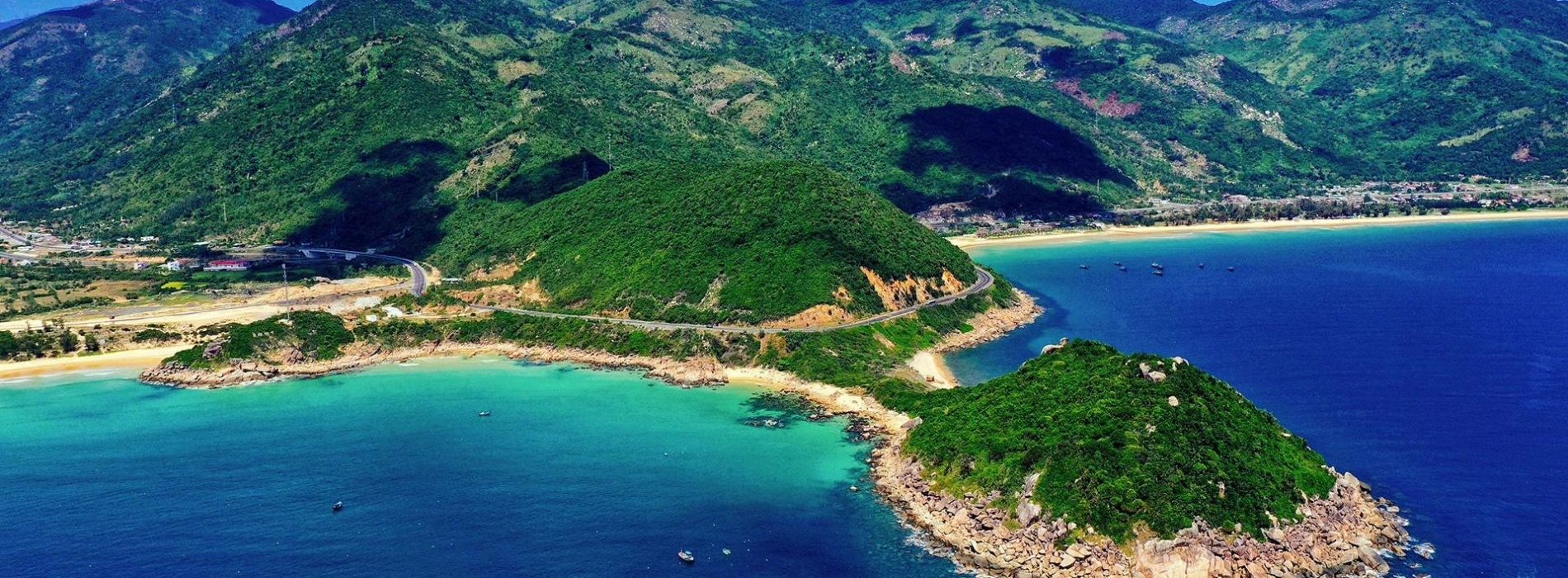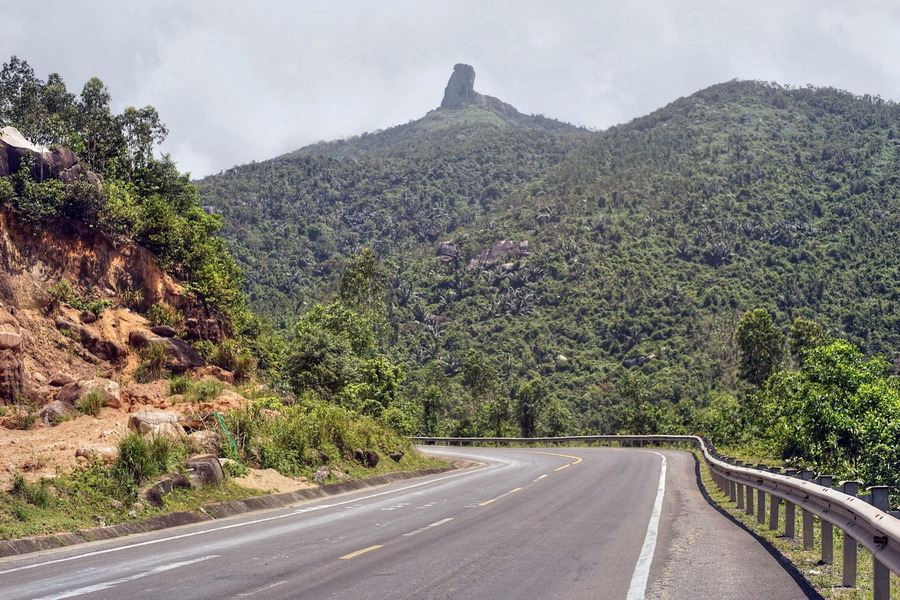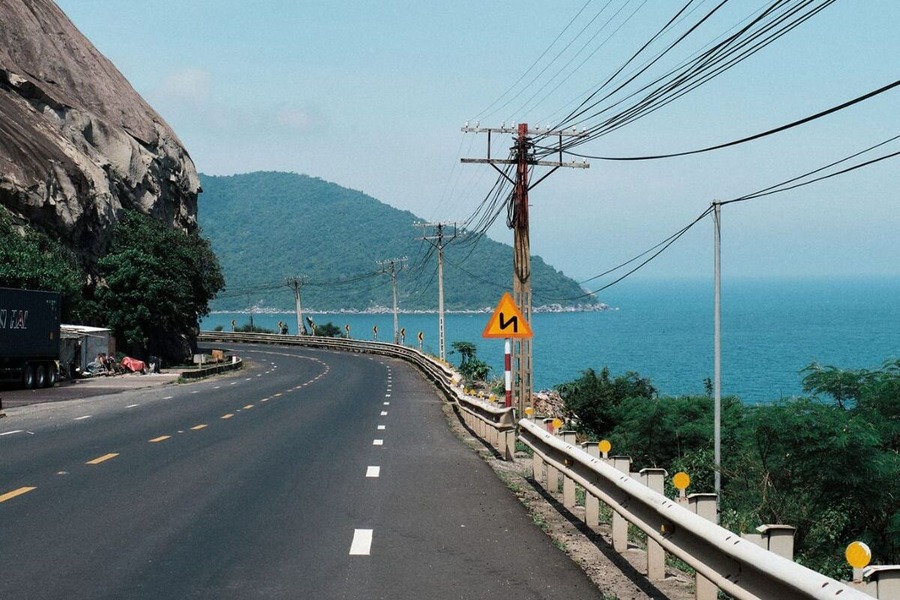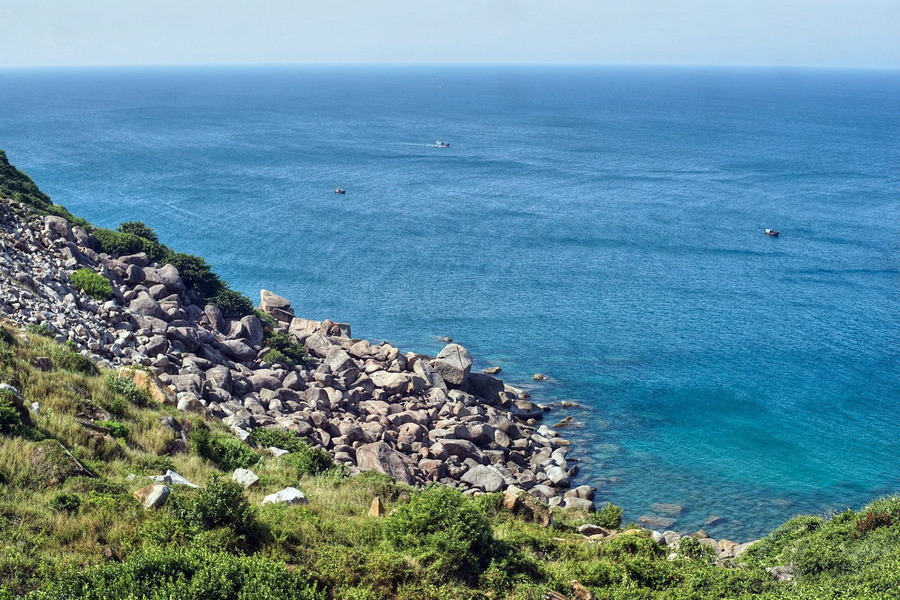Ca Pass

Numerous mountain ranges in Central Vietnam reach all the way to the sea. When transportation is developed, these once-challenging geographic barriers have unexpectedly turned into breathtakingly scenic routes. When traveling to Khanh Hoa by land, you will face this beauty at Ca Pass. Join Asia King Travel in exploring the pass through our Vietnam travel guide.

Like the famous Hai Van Pass, Ca Pass lies between the mountains and the sea
Originally, the land around Ca Pass belonged to the Kingdom of Champa. However, after the Dai Viet–Champa war in 1471, the Cham people were forced to retreat southward, and Ca Pass became the border between the two kingdoms. King Le Thanh Tong had an inscription carved on an 80-meter-high rock at nearby Da Bia Mountain (also known as Stone Stele Mountain) to commemorate this event.
The Cham people first opened the mountain route. The road through the pass was later built and expanded by the French in the early 20th century (around 1890–1925) to serve colonial exploitation and connect the North–South transportation route. More recently, a tunnel through the mountain was inaugurated in 2017, making travel safer and faster than the pass road. However, many people still choose to take the pass to enjoy the natural scenery.

The massive rock is believed to bear the inscription ordered by King Le Thanh Tong
Ca Pass lies on National Highway 1A between Hoa Xuan Commune in Dak Lak Province and Dai Lanh Commune in Khanh Hoa Province. The pass is located about 40 km south of Tuy Hoa Ward (formerly Tuy Hoa City, Phu Yen Province) and 90 kilometers north of Nha Trang (Khanh Hoa Province). Just below the pass is the stunning Vung Ro Bay, now increasingly popular with travelers.
The pass stretches 12 km and sits at an elevation of 333 meters above sea level. It has 98 sharp bends, winding through the Dai Lanh mountain range with the road running close to the cliffs. Overall, the route is not too challenging, while its scenery can compare to Hai Van Pass.
From Tuy Hoa, you can head south via Nguyen Tat Thanh Street or Hung Vuong Boulevard along the coast. We recommend taking the coastal road, as the scenery is absolutely stunning and passes by Vung Ro Bay. From there, you will naturally arrive at the pass. If you take Nguyen Tat Thanh Street, you’ll reach National Highway 1A, where you can either go straight through the Ca Pass Tunnel or turn left to drive up the pass.
Traveling from Nha Trang is just as wonderful when you take the coastal road through Van Phong Bay, though the journey is longer. But sometimes, a longer road filled with beautiful scenery is truly a blessing. Once you’ve driven along the Central Vietnam coastline, you’ll find yourself completely enchanted by it.

To save time and ensure safety, you can travel through the Ca Pass Tunnel
Ca Pass is best visited during the dry season, from January to August each year. At this time, the weather is sunny with little rain, clear blue skies, and wide visibility. The months from March to June are especially popular, as the climate is pleasant and perfect for combining a Central Vietnam tour with a beach escape at Vung Ro or Dai Lanh.
In addition, the time of day greatly affects the experience. Early morning has the coolest and most refreshing air for the journey. Late afternoon is also unforgettable when you can watch the sun slowly set over the sea. However, traveling at night is not recommended due to poor lighting and heavy truck traffic, which can lead to significant dangers.
Suggested for you: Buon Ma Thuot Tour 3 days: Panoramic view
The scenery of Ca Pass is a harmonious blend of mountains, sky, and ocean. When you travel along the pass, you’ll experience winding, twisting roads surrounded by the grandeur of both forests and sea. On one side lies a deep rocky abyss, while on the other, layers of rolling mountains stretch endlessly. Looking down from above, Vung Ro Bay with emerald waters shines under the sunlight right before your eyes.

Roads as beautiful as a painting
Ca Pass demands absolute caution when driving. There’s no room for complacency on these challenging bends. Yet your efforts will be well rewarded with the exhilarating experience of immersing yourself in nature and savoring the majestic beauty of Vietnam’s mountains and seas.
Thanks to its year-round cool climate, the area around Ca Pass is home to many rare species of flora and fauna such as Asiatic black bears, pangolins, crested pheasants, and porcupines. This diverse ecosystem adds to the wild charm and allure of Central Vietnam’s coastal landscape. Stop for a moment and capture a few photos, Ca Pass will be an endless source of inspiration.
Da Bia Mountain: The Da Bia Mountain is located at the start of the mountain pass from the Dak Lak side. It is famous for the gigantic stele-shaped rock about 80 meters high on its peak, which can be seen from afar. Legend has it that in 1471, when King Le Thanh Tong personally led his army to attack Champa, he stopped at the foot of the mountain, had his soldiers climb up to clearly mark the territory of Dai Viet (present-day Vietnam) at this very spot.
Vung Ro Bay: The bay is encircled by three mountains, which create an extremely pristine and wild landscape. The bay features turquoise-blue water and a long, sweeping white sand beach. Dien Cape is considered the most beautiful place to watch the sunrise and sunset in Vietnam.

Vung Ro Bay as seen from Ca Pass
Dai Lanh Beach: At the end of the pass, you'll find Dai Lanh Beach. Like Vung Ro Bay, it is also secluded among the mountains, possesses a pristine beauty. If Nha Trang feels a bit too crowded for you, take a dip in the peaceful waters at Dai Lanh.
Visiting Ca Pass, you’ll travel along one of the most beautiful coastal roads in Vietnam while also having the chance to stop at many nearby attractions. Contact Asia King Travel to enjoy this unforgettable experience.
Suggested for you: Buon Ma Thuot Tour 2 days: Great Discovery of Lak Lake